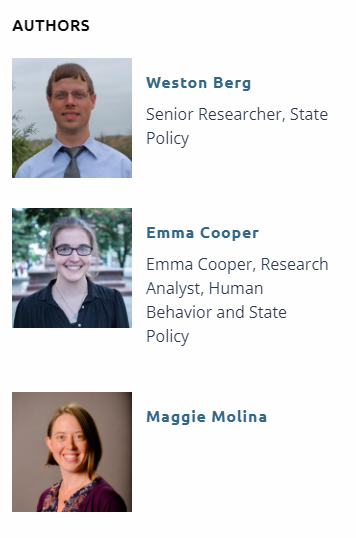Report: States’ climate efforts will be more costly, less equitable without stronger efficiency steps

A slew of states with robust climate goals to cut greenhouse gas emissions risk incurring higher costs for households and businesses and seeing less-equitable outcomes because they have limited plans for using energy more efficiently, a Sept. 29 report warns. Most of their signature state climate policies, such as clean electricity standards and emissions reductions goals, have not articulated the important role of energy efficiency in plans to decarbonize state electric grids and economies, the American Council for an Energy-Efficient Economy finds.
The American Council for an Energy-Efficient Economy, a nonprofit research organization, develops policies to reduce energy waste and combat climate change. Its independent analysis advances investments, programs, and behaviors that use energy more effectively and help build an equitable clean energy future.
Without clear direction, state agencies and utility regulators may not prioritize energy-saving efforts, missing a key opportunity to help ensure clean energy and climate targets are achieved—and done so equitably and at lower cost. Policymakers could, for instance, adopt rules that enable utilities to provide customers incentives for buying electric heat pumps, set building energy performance standards that spur energy-efficient retrofits, or invest in electric vehicle charging infrastructure coupled with comprehensive transportation planning efforts.
“Transitioning away from electricity sources that produce greenhouse gases is a big undertaking, and reducing energy waste is one of the most important tools. If your state doesn’t have a pretty clear plan for how to improve efficiency, it’s on an uncertain and potentially costly path toward decarbonization,” said Weston Berg, senior researcher for state policy at ACEEE and lead author of the report. “It doesn’t make sense for any state to go after a big transformation of its energy system with one hand tied behind its back. We don’t want to look back in a decade or two and see that these states left some of the best tools on the table.”
ACEEE’s review of the 17 U.S. states and territories with laws requiring a transition to 100% clean electricity found that only Virginia’s and Washington State’s include specific efficiency targets. And of the 24 states (and the District of Columbia) with greenhouse gas emissions reduction goals, 8 make no mention of energy efficiency, while 15 mention it in an undefined way. Only New York’s and the District of Columbia’s emissions targets encompass specific energy consumption reduction goals.
Most of these states have a separate goal for reducing energy use through utility programs that incentivize customers to make energy-saving improvements; many have undertaken efficiency efforts on other policy fronts, such as buildings and transportation. But the report argues that vague or missing efficiency commitments in greenhouse gas reduction goals or clean electricity standards indicate the states have not prioritized the needed ramp-up of efficiency efforts and risk addressing energy waste in piecemeal fashion or as an afterthought.
Several studies show that improving energy efficiency is a key tool for decarbonization. The International Energy Agency’s global roadmap to reach net-zero emissions by 2050, for instance, calls for efficiency improvements averaging 4% per year through 2030, about 3 times the average over the last 2 decades.
The ACEEE report argues that vastly expanded energy efficiency efforts—driven by state goals, direction, and mandates—would:
- Reduce the costs of meeting clean electricity standards by greatly reducing the amount and cost of new renewable energy needed. Combined with demand response measures that shift electric loads to times when renewable energy is abundant, efficiency measures can reduce the challenge of peaks in electric demand and the amount of needed renewables. Efficiency improvements will also reduce the vast land area that will be needed for future solar and wind power facilities.
- Aid the electrification of home equipment and transportation. The large-scale electrification of buildings, transportation, and industry will require not only additional energy generation but also new transmission and distribution investments. Efficiency measures will be critical for mitigating these needs and thus easing the costs of electrification. Measures like weatherization are also crucial for maintaining safe home temperatures in increasingly frequent extreme weather events and associated power outages.
- Make the transition to a decarbonized economy more equitable. Low-income, Black, Hispanic, and Native American households spend a larger share of their income on energy expenses than the average household. Targeted efficiency improvements—particularly for households that are struggling the most—can ensure program benefits extend to all households and immediately and directly reduce energy waste and inequities. Investments in public transit and electric vehicle charging in low-income communities could help ensure clean transportation is available for everyone.
The report highlights examples from states that have demonstrated growing efforts to expand energy efficiency programs in support of state climate plans and, in certain cases, fully align them as part of an integrated statewide strategy. In Minnesota, a new law allows utility efficiency programs to offer customers incentives to switch from fossil fuel equipment to electrified equipment like heat pumps; utility regulators in New York have updated rules for efficiency programs to cut more greenhouse gas emissions; and Virginia lawmakers passed a bill last year setting energy-saving targets for utilities alongside a 100% clean electricity target. Other states passing important energy legislation this year aligning efficiency with climate goals have included Colorado, Illinois and Massachusetts.
The report calls on states to harmonize and coordinate efficiency goals with clean electricity standards and greenhouse gas emissions targets, and in turn set a series of complementary policies to improve energy efficiency.
